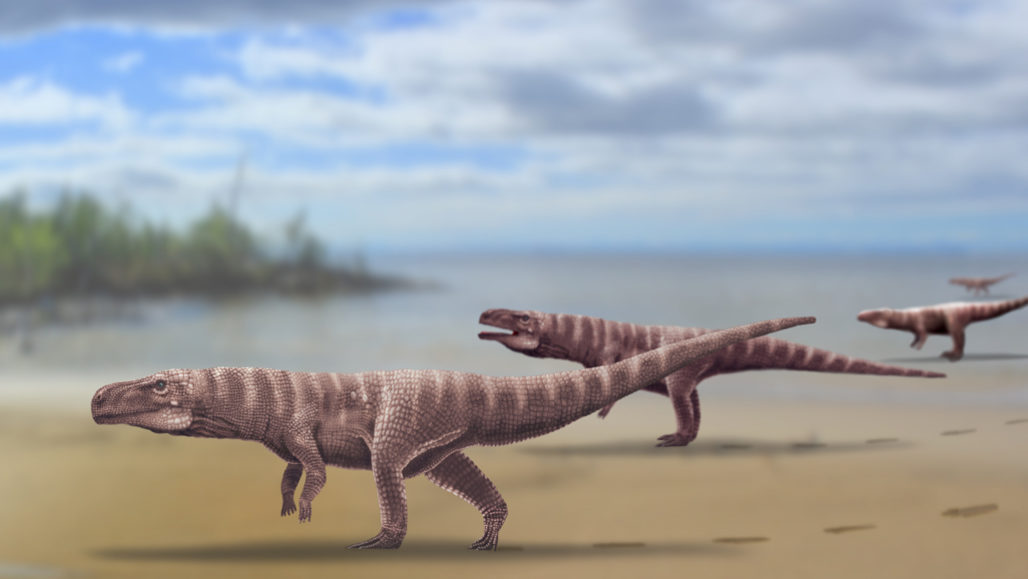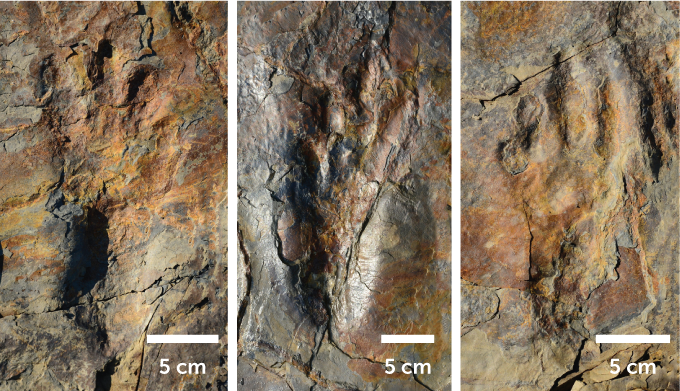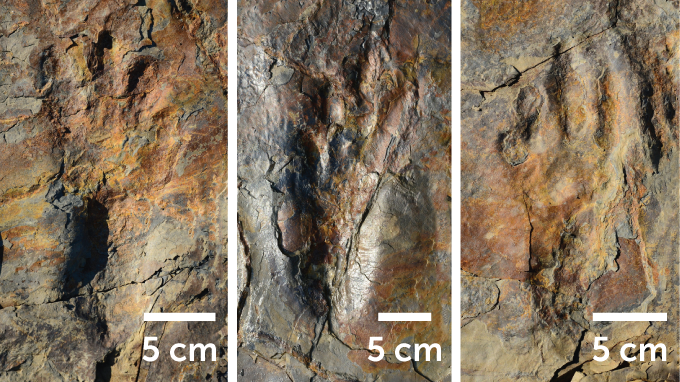These crocodile ancestors lived a two-legged life
Fossil footprints show that it didn’t need to keep its front legs down to get around

This is an artist’s drawing. It shows what the crocodile ancestor might have looked like. It walked on two legs 106 million years ago. Scientists have found its footprints in what is now South Korea.
Anthony Romilio/The University of Queensland
Modern day crocodiles are pretty impressive. Some even climb trees. But 106 million years ago, a crocodile ancestor had another trick: It walked on two legs.
That’s what scientists now think, based on fossil footprints in South Korea. They are the first footprint evidence that some ancient ancestors of modern crocodiles walked on two legs. The size and spacing of the tracks suggest the reptile’s length spanned 2 to 3 meters (6 to 12 feet). That would make it about the size of modern crocs.
The ancient tracks appear in the Jinju Formation, a South Korean site full of fossils. Most of its fossils date to the Mesozoic, between 252 and 66 million years ago. The Mesozoic is sometimes called the Age of Dinosaurs, but plenty of other animals lived at that time, too.
Now scientists have found a set of footprints there. It’s tough to identify what species made them, says Martin Lockley. As a paleontologist, he studies ancient organisms. He works at the University of Colorado in Denver. “Short of finding the animal dead in its tracks, there’s always a little bit of uncertainty,” he explains.
But footprints, like animals, can be classified by type. The scientists couldn’t tell what animal left the beautifully preserved prints. For that, they’d need fossils of its tissues. Instead, they sorted the ancient prints into a “footprint genus.” So while they couldn’t say what animal genus the prints belonged to, they were able to determine that they were in the footprint genus Batrachopus.
All prints in this group were made by crocodylomorphs (Krok-oh-DY-loh-morfs). The name means “crocodile-shaped.” This group includes modern crocodiles, alligators and their ancestors.
The tracks’ most surprising feature is that they only show hind feet. There’s no evidence of “hand” prints at all. That’s strong evidence that this creature was bipedal — walking on only its hind legs, Lockley says. “We have dozens of these things, and not one sign of a front footprint,” he says. “So we’re pretty convinced.”


His team reported its fossil finds June 11 in the journal Scientific Reports.
A two-footed crocodile relative might have also been responsible for another set of mysterious tracks. These appeared in the nearby Haman Formation and date to a similar time. In 2012, the same team of researchers found bipedal tracks there.
At first, the scientists suggested those Hamman tracks might have been made by pterosaurs. These were winged reptiles that lived alongside dinosaurs. But now, most researchers — including Lockley’s team — believe pterosaurs needed all four feet to walk on the ground. Instead, Lockley says, footprints in the Haman formation might be from another two-legged member of the crocodile family.

Educators and Parents, Sign Up for The Cheat Sheet
Weekly updates to help you use Science News Explores in the learning environment
Thank you for signing up!
There was a problem signing you up.
The new tracks aren’t the first hint that some croc ancestors walked on two legs. Another crocodylomorph lived 231 million years ago in what is now North Carolina. It was called Carnufex carolinensis, and is nicknamed the Carolina Butcher. It, too, may have prowled on two legs. But that suggestion was based on what scientists think its skeleton might have looked like. The Carolina Butcher didn’t leave any known footprints, Lockley says, and footprints are the best evidence for how an animal walked. “The real punchline of our story is we have proof of large bipedal crocs.”







